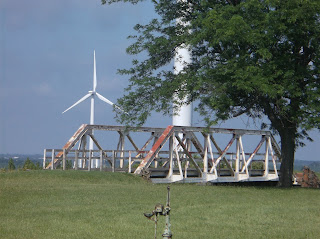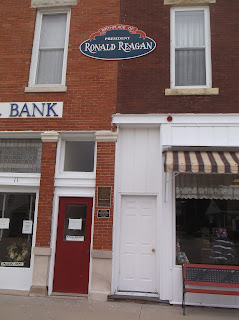 |
| Bird's Eye View |
 |
| Unique topography and history |
"The birds you see soaring above the valley are looking down on an area of Northeast Iowa that is geologically known as the Paleozoic Plateau or Driftless Area. This area was missed by late Pleistocene Epoch glaciations resulting in a unique topography defined by limestone bluffs, woodlands, sinkholes, coldwater spring-fed trout streams, and diverse flora and fauna. The floodplain valley was created by meandering flow of the Turkey River over thousands of years. The Turkey River Watershed encompasses 1,083,520 acres and extends into parts of eight counties draining nearly 70% of Fayette County on the way to its confluence with the Mississippi River. Hawks, eagles, turkey vultures, and other large birds commonly soar above the Turkey River Valley on upward currents of warm air called thermals, looking down on this ecologically diverse area, which, also has a rich Native American history."
Reading from the three smaller sections in the first photo above:
The "Neutral Ground"
"The Valley below is included in a 40-mile strip of land set aside in 1825 at a treaty conference in Prairie du Chein, with the intent of separating the Sioux to the north and the Fox/Sac nations to the south."
"Hunting and Fishing"
"The neutral ground, extending from the Mississippi River west to the East fork of the Red Cedar River, allowed Indians of any tribe to hunt and fish with no charge of trespassing."
"Prairie Meets the Woods"
"Native American Cultures of the Fayette County area generally combined both prairie and woodland characteristics as they lived on the interface between the two natural habitats."
Fayette County Conservation Goeken Park Established 1961
 |
| Goeken Park |
Beautiful ornaments were centered in each gate-like section of the overlook. Do not miss the American Flag at the left in the following photo. The post below the picture says Iowa Byways. Click on any photo to enlarge it and escape to return to the blog.
 |
| Iowa Byways |
 |
| Fayette County Conservation |
 |
| View from Overlook |
 |
| View from Overlook |
Hope you enjoyed seeing these scenic views and hearing the history.
Thank you for visiting the blog.
Feel free to comment in the section below.
Come back to see where we go next.













































